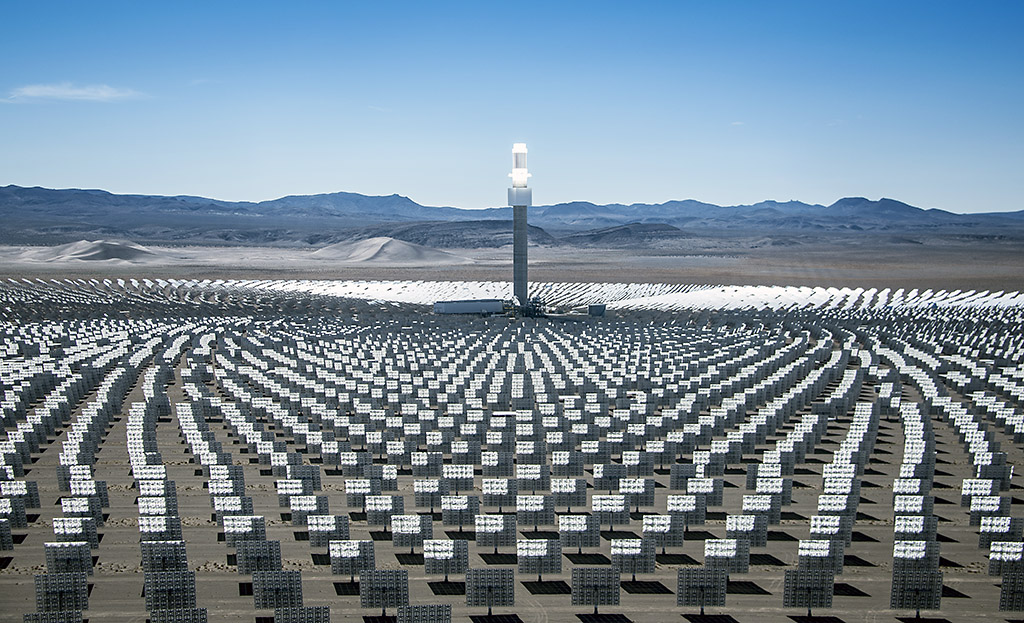Thousands of mirrors, called heliostats, direct the sun’s energy onto a receiver, which was built using expertise gained from constructing the space shuttle main engine. The NASA spinoff receiver sits on top of a 550-foot tower. (SolarReserve)
Home Thousands of mirrors, called heliostats, direct the sun’s energy onto a receiver, which was built using expertise gained from constructing the space shuttle main engine. The NASA spinoff receiver sits on top of a 550-foot tower. (SolarReserve) Thousands of mirrors, called heliostats, direct the sun’s energy onto a receiver, which was built using expertise gained from constructing the space shuttle main engine. The NASA spinoff receiver sits on top of a 550-foot tower. (SolarReserve)




